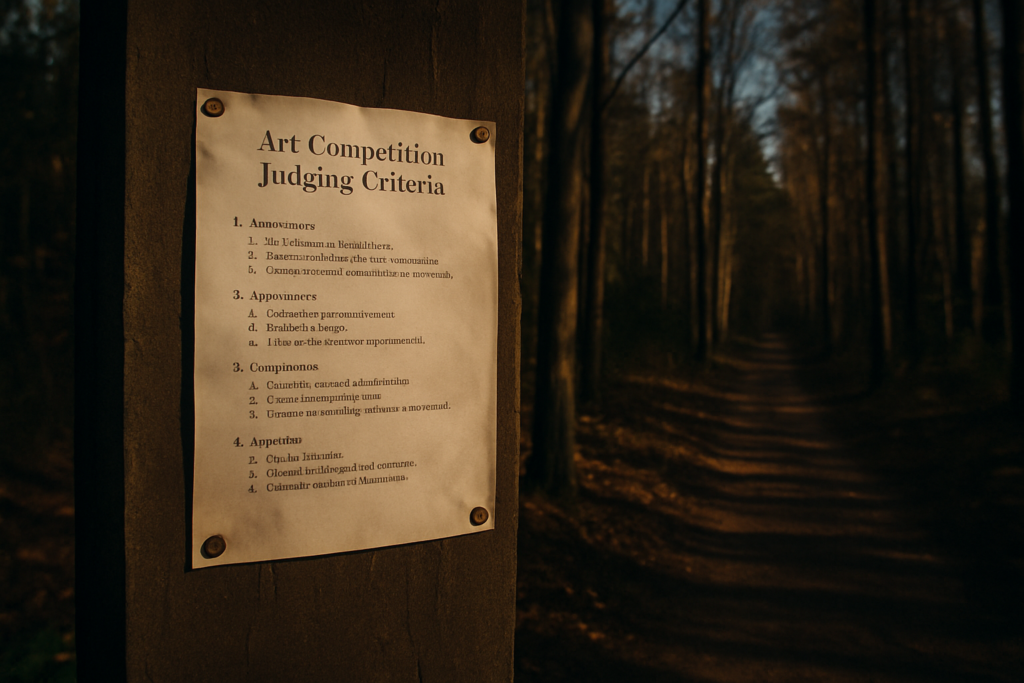Crafting a compelling artist statement is a vital skill for artists looking to stand out in competitions. As an artist, I understand the importance of effectively communicating the inspiration and message behind my work. In this article, I’ll share valuable insights on how to write a winning artist statement that captivates judges and elevates your chances of success.
Your artist statement is more than just a description of your art; it’s an opportunity to connect with the audience on a deeper level. I’ll guide you through the process of articulating your artistic journey, influences, and the significance of your creations in a concise yet impactful manner. Mastering this art of storytelling can make a significant difference in how your work is perceived and appreciated in the competitive world of art competitions.
Join me as I delve into the strategies and tips that can help you craft a winning artist statement that resonates with the hearts and minds of the viewers and judges alike.
Understanding the Importance of an Artist Statement
To truly grasp the significance of an artist statement, let’s delve into why it holds a crucial role in competitions.
What Is an Artist Statement?
An artist statement serves as a written description that accompanies your artwork, providing insights into the inspiration, influences, and themes behind your creative pieces. It acts as a bridge connecting the viewer to your work, offering a deeper understanding and appreciation of your artistic process.
Why It Matters in Competitions
In the competitive realm of art competitions, an artist statement serves as a key tool in distinguishing your work amidst numerous submissions. Judges and viewers look to artist statements to gain a comprehensive insight into the artist’s intentions, techniques, and the narratives woven into the artwork. Crafting a compelling artist statement can significantly impact how your art is perceived, valued, and ultimately, stand out in the competitive landscape.
Key Components of a Winning Artist Statement
Crafting a compelling artist statement is essential for success in art competitions. Here are the key components that can help you create a winning artist statement:
Clarity and Conciseness
When writing your artist statement, clarity and conciseness are key. Clearly articulate the inspiration behind your art and the message you aim to convey. Avoid including unnecessary details that may distract from the main points. Judges and viewers appreciate a statement that is easy to understand and gets straight to the heart of your artistic vision.
Personal Touch and Authenticity
Infuse your artist statement with a personal touch that reflects your unique voice and perspective. Share insights into your artistic journey, motivations, and influences. Authenticity resonates with audiences and adds depth to your work. Avoid generic statements and instead, showcase what sets your art apart and makes it a true reflection of who you are as an artist.
Contextualizing Your Work
Provide context for your art by explaining the techniques, mediums, and themes you explore in your work. Help viewers understand the story behind each piece and the overarching themes that tie your portfolio together. By contextualizing your work, you invite viewers to engage with your art on a deeper level and appreciate the thought and intention behind each creation.
Crafting Your Statement
When crafting your artist statement, remember that the opening plays a crucial role in capturing the reader’s attention. I’d suggest starting with a strong opening that succinctly introduces your artistic identity and sets the tone for the rest of the statement.
Starting with a Strong Opening
In my experience, a strong opening should be concise yet engaging, offering a glimpse into what inspires your art and why it’s unique. It’s essential to hook the reader from the start by clearly stating your artistic vision and what drives your creativity.
Discussing Your Themes and Techniques
When discussing your themes and techniques, focus on providing insight into the core themes present in your work and the artistic techniques you employ. By delving into these aspects, you give readers a deeper understanding of your artistic process and the messages you aim to convey through your art.
Closing with Impact
To leave a lasting impression, I recommend closing your artist statement with impact. Summarize the key points discussed in the statement, reinforcing the significance of your art and its impact. End with a powerful statement that resonates with the reader, leaving them with a clear understanding of your artistic journey and the emotions you aim to evoke through your creations.
Tips for Refining Your Artist Statement
Seeking Feedback
When refining my artist statement, I find it beneficial to seek feedback from fellow artists or mentors. Getting an outside perspective helps me identify areas for improvement and ensures that my statement effectively communicates my artistic vision. By sharing my statement with others, I can receive valuable insights that enhance the clarity and impact of my message.
Revising and Editing
In the process of perfecting my artist statement, I prioritize revising and editing meticulously. I carefully review each sentence to ensure that it conveys my ideas concisely and powerfully. By revisiting my statement multiple times, I can refine the language, structure, and tone to create a compelling narrative that captivates the reader. Editing is a crucial step that allows me to eliminate any unnecessary details and maintain a cohesive flow throughout the statement.
Examples of Successful Artist Statements
In crafting a winning artist statement for competitions, studying examples of successful statements can provide valuable insights into the style, tone, and content that resonate with judges. Here are a few noteworthy examples that illustrate effective approaches to artist statements in the realm of art competitions:
- Emotionally Evocative Language: Using vivid and emotionally charged language, such as “My artwork seeks to evoke a sense of nostalgia and longing for bygone eras,” can draw readers into the artist’s world and create a connection through shared emotions.
- Personal Storytelling: Sharing personal anecdotes intertwined with artistic inspiration can humanize the artist’s work. For instance, “Growing up in a small coastal town, the rhythmic crashing of waves against the shore inspired the fluidity and movement in my paintings.”
- Artistic Process Exploration: Taking the audience on a journey through the creative process can add depth to the statement. For example, “Experimenting with unconventional materials allows me to push the boundaries of traditional art forms and challenge perceptions of texture and form.”
- Philosophical Reflections: Infusing philosophical reflections can demonstrate the artist’s depth of thought. An artist might express, “By exploring the concept of impermanence in my sculptures, I invite viewers to ponder the fleeting nature of existence and the beauty found in transience.”
- Connection to Social Issues: Addressing social issues in an artist statement can showcase the artist’s engagement with the world. For instance, “Through my photography series documenting urban decay, I aim to shed light on the forgotten corners of society and provoke discussions on neglect and urban renewal.”
Studying these examples can inspire artists to tailor their statements effectively, ensuring they resonate with their audience and convey the passion and intention behind their creations.



